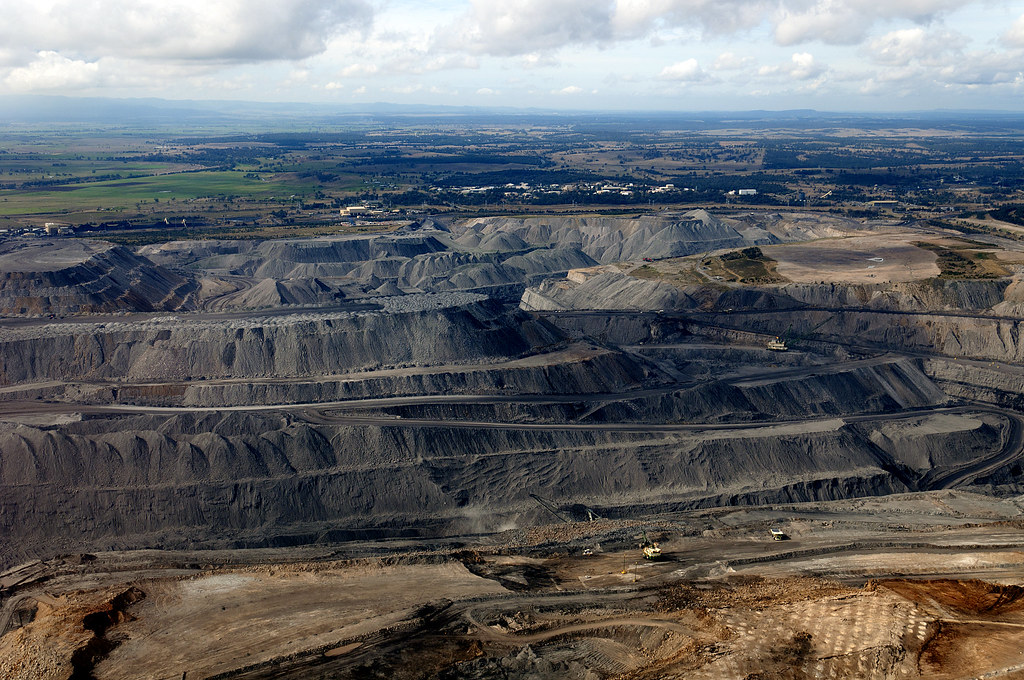Australia’s national carbon pollution figures released belatedly by the Coalition government make for a grim reading. According to The Australia Institute (TAI), one of the most worrying aspects are emissions arising directly from the coal and gas industries in Australia, which made up about 15% of all national emissions in 2017, and are likely to stay on the upward trajectory.
Overall emissions continue to rise significantly across all energy-related sectors, except for electricity generation where wind and solar continue to eat into the pie previously reserved for coal and gas. What the TAI results show is that, on the basis of the government’s own official figures, Australia’s total emissions increased by 1.0% between 2016- 17 and 2017-18 and are likely to increase by a further 0.3% between 2017-18 and 2018-19.
The report, however, notes that current emissions are significantly impacted by the sharp reduction in cattle and sheep numbers caused by the current drought in eastern Australia (and also the loss of cattle in the north west Queensland floods). If this were a “normal” season, emissions could well be increasing again by as much as a full 1%.
Looking at the individual emission source categories, electricity has decreased by about 10% from 2005, and 17% from a peak in 2009, while industrial processes, agriculture and waste have all decreased slightly (around 6% over the whole 14 years). Transport emissions have increased by 23% driven largely by diesel which has jumped by a staggering 50%. Meanwhile, stationary energy emissions other than electricity generation by 30%, and fugitive energy by an astonishing 55%, TAI finds.
“The new Minister for Emissions Reductions Angus Taylor has begun his term by delivering two key reports that confirm Australia’s rising emissions,” said the report’s author Hugh Saddler, referring to the National Inventory Report 2017 and December 2018 National Greenhouse Gas Inventory Quarterly Update to the United Nations. “What the latest National Energy Emissions Audit confirms is that Australia’s emissions are rising, not falling. These findings fly completely in the face of Minister Taylor’s claims to the contrary.”
According to Saddler’s report, the sharp increases in stationary and fugitive emissions are largely explained by the boom in the extraction of both conventional natural gas and coal seam gas, and the processing of this gas to LNG for export. While overall emissions from mining continued to increase, Queensland’s gas and coal mining emissions alone already accounted for 7% of Australia’s total in 2016. The report notes this share is likely currently even higher.
“Emissions directly from the gas and coal industries in Australia made up about 15% of all national emissions in 2017; given fossil fuel extraction has subsequently increased, it is hard to see how they wouldn’t be even higher now,” Sadler said.
The TAI report comes hot on the heels of a United Nations climate conference held in Bonn last week. While it largely focused on preparing the rules for Article 6 of the Paris Agreement ahead of a summit in Santiago, Chile, later this year, the Bonn talks also tackled the topic of the carry-over of Kyoto credits into the Paris Agreement. Questions were raised as to whether nations, such as Australia which expects to halve its emissions reductions obligations by 2030 using this ‘accounting trick’, should be allowed to do so.
This content is protected by copyright and may not be reused. If you want to cooperate with us and would like to reuse some of our content, please contact: editors@pv-magazine.com.









By submitting this form you agree to pv magazine using your data for the purposes of publishing your comment.
Your personal data will only be disclosed or otherwise transmitted to third parties for the purposes of spam filtering or if this is necessary for technical maintenance of the website. Any other transfer to third parties will not take place unless this is justified on the basis of applicable data protection regulations or if pv magazine is legally obliged to do so.
You may revoke this consent at any time with effect for the future, in which case your personal data will be deleted immediately. Otherwise, your data will be deleted if pv magazine has processed your request or the purpose of data storage is fulfilled.
Further information on data privacy can be found in our Data Protection Policy.